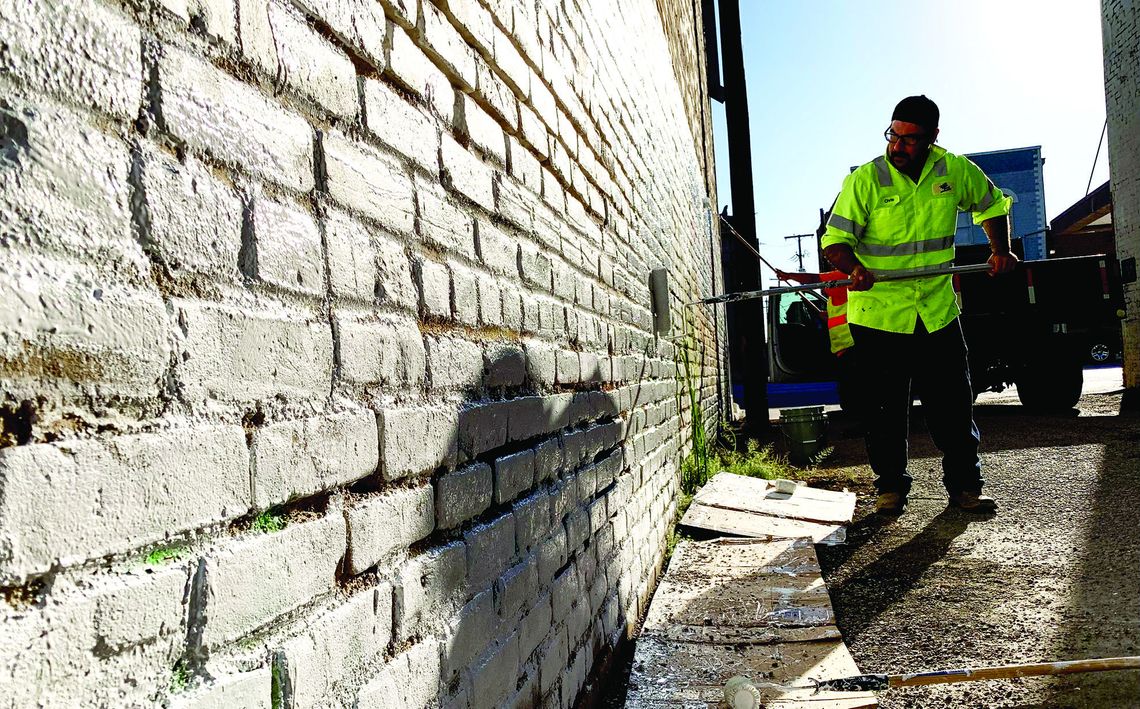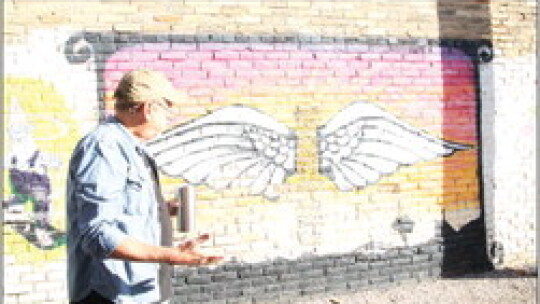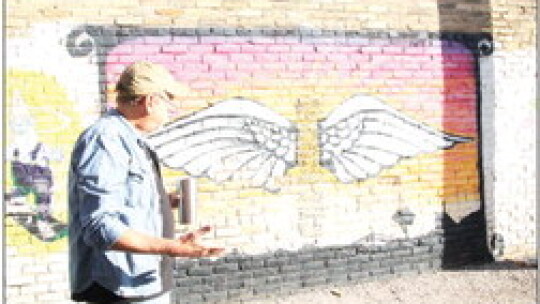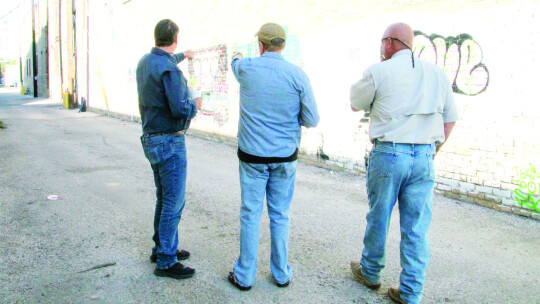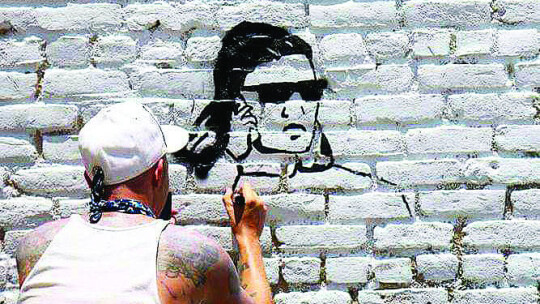A dormant controversy over censorship and public art has come back to life.
Last month, the City Council approved moving forward with the public arts advisory committee’s plan to replace the murals in Potters Alley with new artwork created by seven artists whom the committee selected.
According to city officials, artists Ashley Rose, Michele Primeaux-Johnson, Abel Saldaña, Matthew Bisaccca, Cody Sigmund, Rachel Martin and Diana Goetting will each receive a $200 stipend for their work, paid for from the FY 2022-23 budget allocated to the Public Arts Advisory Board.
As of Friday, the wall had been repainted white to give the artists a canvas to work on in time for the 2022 Car Show Oct. 29.
“This has been a long time coming,” Board Chairman Richard Stone said. “We have been working on this on several layers and in several ways since our inception in 2019 and 2020. While it wasn’t necessarily stated, we believe part of our mandate in public arts was to figure out how to legitimize the work that was done on the wall of Potter’s Alley.”
In 2018, a group of local artists engaged in a spontaneous and unpermitted effort to create street art in the alley, including Sigmund’s popular “Wings” mural, causing city officials to threaten fines if the work did not cease.
Several of the artists charged that censorship was occurring, but city officials countered that the work was done in violation of a 2008 ordinance, which required any public art to go through a permitting process through the Main Street Advisory Board.
While several of the artists who had participated in the original project are slated to participate in the new mural work, one of the key figures, local artist Dennis Levitin, is notably absent from the list.
Levitin, who has completed many mural projects around town, said he did not apply because the effort seemed like cultural appropriation.
“It’s getting gentrified,” Levitin said. “If anybody came up with an idea, and someone else takes your idea and your concept, and then after that go, ‘Oh, you can still be a part of it, I was like, ‘OK, bro.’” Stone said that he was disappointed that Levitin chose not to participate and was still reserving a portion of the wall for him in case he changes his mind and decided to apply.
“We have tried to reach out to every artist that we could discover that was involved in the original work,” Stone said. “I understand what (Levitin) is saying, and we are trying to honor the spirit of what he has done. But it is what it is. There is a process.”
McCrory-Timmerman co-owner Judy Blundell, a key figure in Taylor’s art community who was involved with the original project, said she could understand both sides of the issue.
However, due to the fact that local artists are being spotlighted, Blundell said she is looking forward to seeing it come “back to life.”
“I am all for it,” Blundell said. “The good thing that it is going to accomplish is they will treat the surface properly and apply the paint in a way where it will last.”

